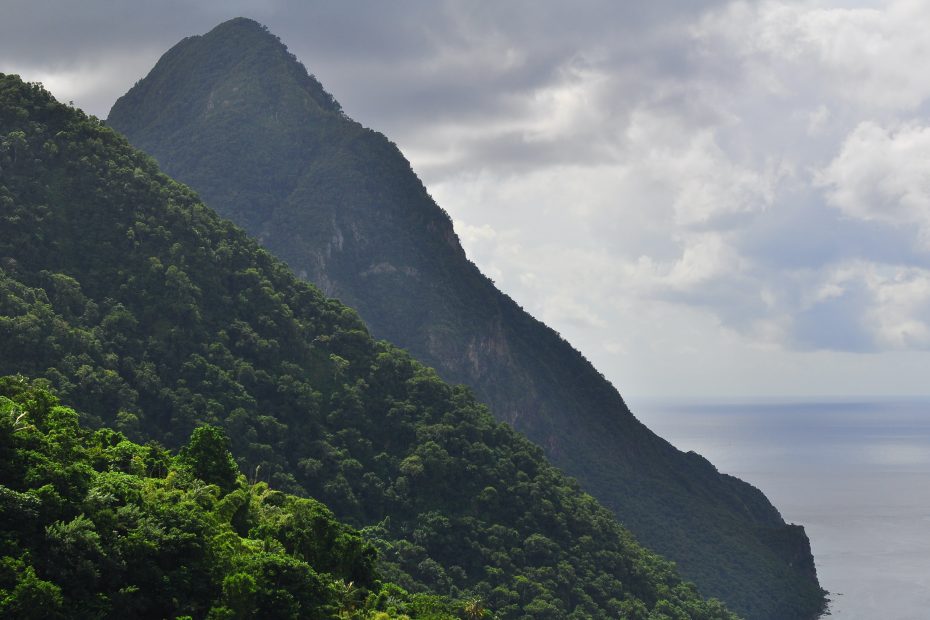Table of Contents
Introduction
The island nation of Saint Lucia is located in the stunning Eastern Caribbean Sea. With its lush rainforests, iconic twin volcanic peaks, and breathtaking beaches, this small island is full of natural wonders. But beyond its idyllic landscape, Saint Lucia also possesses a rich culture influenced by its complex history. The local Creole heritage, cuisine, music, festivals, crafts, and language all contribute to the vibrant culture visitors can discover in Saint Lucia.
Cuisine
Saint Lucian cuisine is a delicious fusion of French, British, African, and Indian influences. Local dishes make abundant use of fresh seafood, tropical produce like bananas and coconut, and flavorful herbs and spices. Iconic Saint Lucian foods include salt fish and green fig (salted cod with boiled banana), callaloo soup (with leafy greens and meat), and lambi (conch). The traditional breads kassav and planteur derive from French influence, while curry dishes and rotis reflect Indian traditions. Don’t miss trying local favorites like BBQ chicken, stewed pork, and lobster at popular restaurants around the island!
Music and Dance
Music and dance play an integral role in Saint Lucian cultural identity. The annual Saint Lucia Jazz and Creole Music Festival attracts top musicians playing lively calypso, reggae, soca, zouk, and other styles. Folk dances like the kwadril demonstrate the islands’ shared African roots through rhythmic drum beats, sensual movement, and colorful costumes. More informal, modern dancehall moves will likely be on display during the many street parties and carnivals. Join in the revelries or simply enjoy watching Saint Lucians celebrate through music and dance.
Arts and Crafts
Saint Lucia’s local handicrafts make excellent mementos for visitors. Skilled artisans demonstrate traditional practices like straw weaving, clay pottery, and batik fabric making. Bright, intricate designs incorporate cultural symbols, tropical flora and fauna, or abstract patterns. Visitors should browse the Castries Market, Vendor’s Arcade, and roadside stalls to find handmade baskets, ceramics, spices, woodcarvings, and textiles. Bring home a piece reflecting Saint Lucia’s heritage.
Festivals and Events
A full calendar of festivals and events round out Saint Lucian cultural traditions. The raucous Carnival captures the island’s vibrant spirit through elaborate costumes, soca music, calypso competitions, and parades. Street parties for holidays like New Year’s and Easter similarly represent local joie de vivre. Cultural heritage gets honored during Creole Day, or Jounen Kwéyòl Entenasyonal, celebrated countrywide. Don’t miss Saint Lucia’s biggest summer festival in August if visiting then. Check event schedules to experience the island’s exciting mix of cultural festivities.
UNESCO World Heritage Sites
Two of Saint Lucia’s most treasured natural sites hold UNESCO World Heritage status reflecting their ecological and cultural importance. The Pitons Management Area encompasses the iconic twin volcanic peaks rising dramatically from the sea. These geological wonders also have deep significance in Saint Lucian folklore and identity. The Qualibou depression contains archeological remains, medicinal sulfur springs, and biodiversity within its caldera valleys and forests. Experiencing these protected areas provides a connection to Saint Lucia’s heritage.
Language
Saint Lucian Creole French, or Kwéyòl, is the official language spoken across the island. This lyrical vernacular integrates West African and French vocabulary with English and some indigenous Carib words. Saint Lucians use Creole for daily interactions, storytelling, and celebrating their culture. Learning a few Creole phrases shows respect and deepens visitors’ understanding of this linguistically diverse destination. Standard English is also widely spoken, though Kwéyòl offers insight into Saint Lucia’s unique heritage.
Conclusion
Beyond its natural splendor, the colorful Creole traditions of Saint Lucia make it an engaging Caribbean destination. The cuisine, music, handicrafts, events, and even language distinguish this island as a vibrant, living tribute to its complex history. Experiencing Saint Lucian cultural offerings directly through food, dance, and heritage sites provides visitors a more meaningful connection than simply admiring the landscape alone. Immersing in the everyday local culture brings the island to life. Saint Lucia’s singular identity shines through for those who take the time to listen, taste, and celebrate what makes it so special.
FAQ
What is Saint Lucia best known for culturally?
Saint Lucia is best known for its distinctive Creole heritage, influence by African, French, British and Caribbean traditions. The local cuisine, music, language, festivals and crafts all reflect this vibrant blending of cultures.
What traditional Saint Lucian dish should visitors try?
Visitors should try Saint Lucia’s national dish callaloo soup, made from leafy greens, meat or seafood, thyme, garlic, peppers and other delicious ingredients. Other iconic local foods are salted cod and boiled green bananas, fresh lobster and conch, curry dishes, tropical fruits and local vegetables.
What is Saint Lucia’s Jounen Kwéyòl Entenasyonal festival?
Jounen Kwéyòl Entenasyonal is Saint Lucia’s celebration of the Creole heritage and culture. It is dedicated to preserving and promoting the local customs, cuisine, crafts, music and Creole language of Kwéyòl. The festival happens in late October across the island.
What handicrafts is Saint Lucia known for?
Saint Lucia has a tradition of handicrafts like straw weaving, clay pottery, wood carving, batik fabrics, spice blends, and handmade clothing using bright designs and cultural symbols. Popular souvenirs include straw hats and bags, clay cookware, artwork, spices, and textiles.
What is Saint Lucia’s UNESCO World Heritage site?
The Pitons Management Area containing Saint Lucia’s iconic twin volcanic peaks, forests and sulfur springs is a designated UNESCO World Heritage site. The Qualibou depression with archeological remains and biodiversity also has World Heritage status. These protect the natural and cultural treasures.
